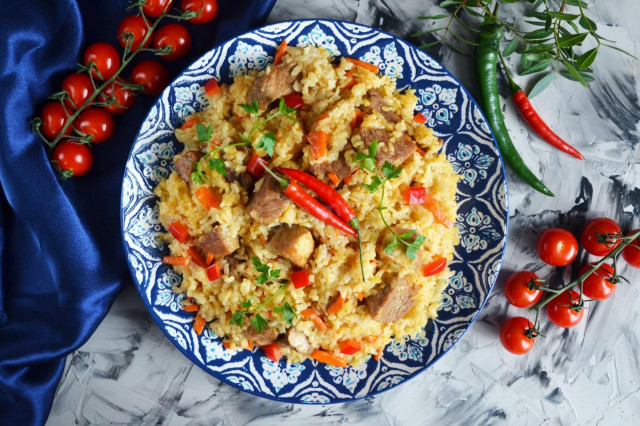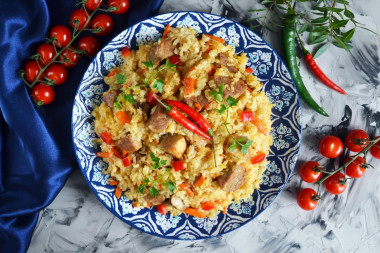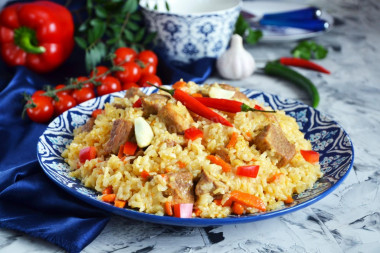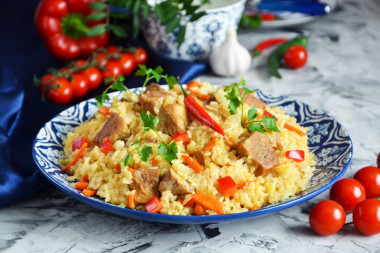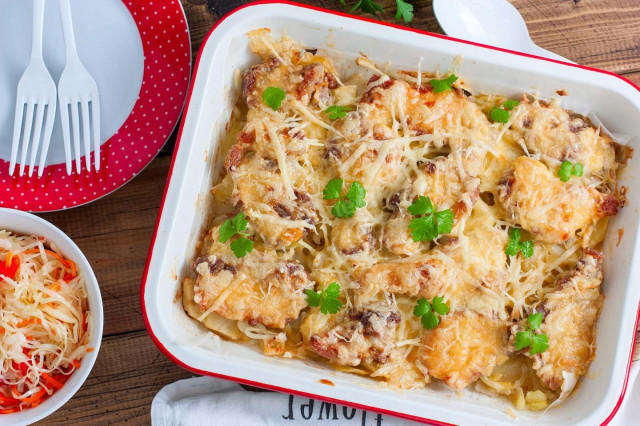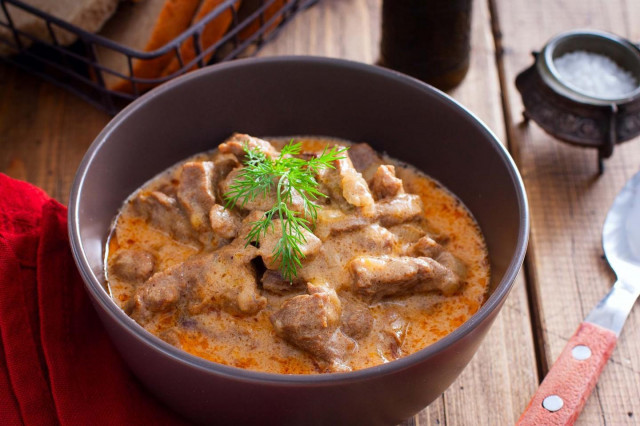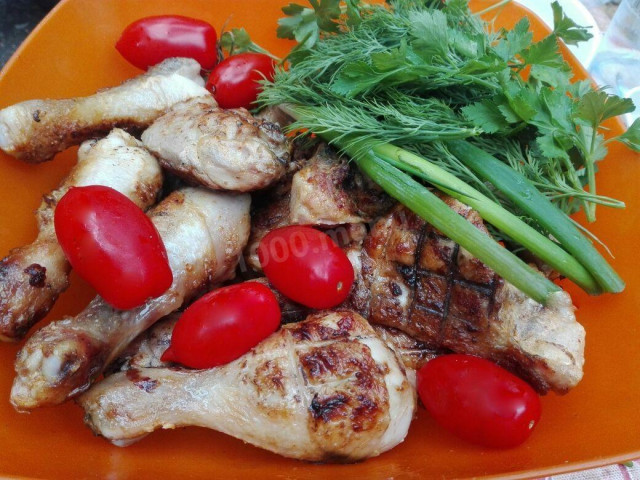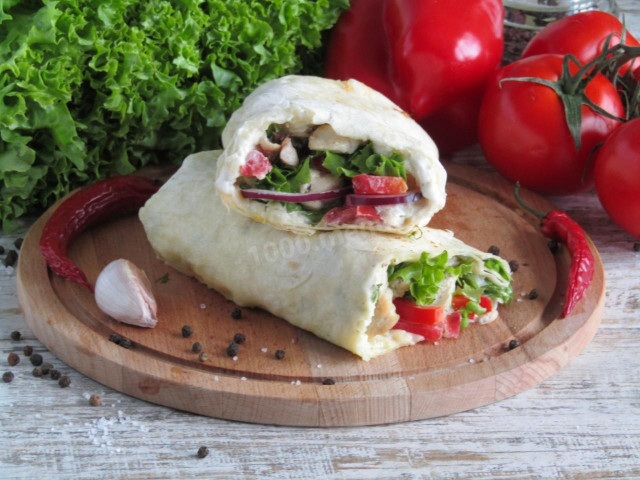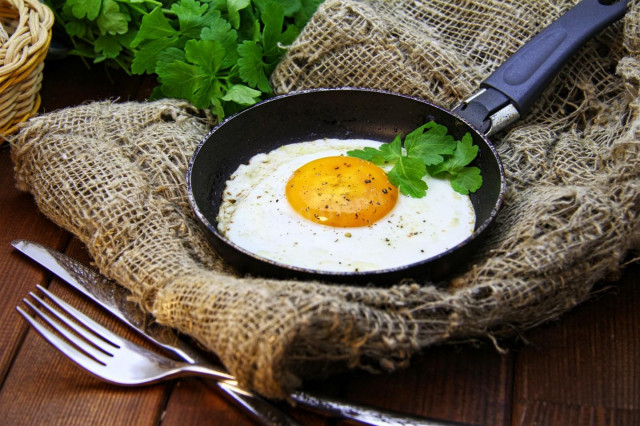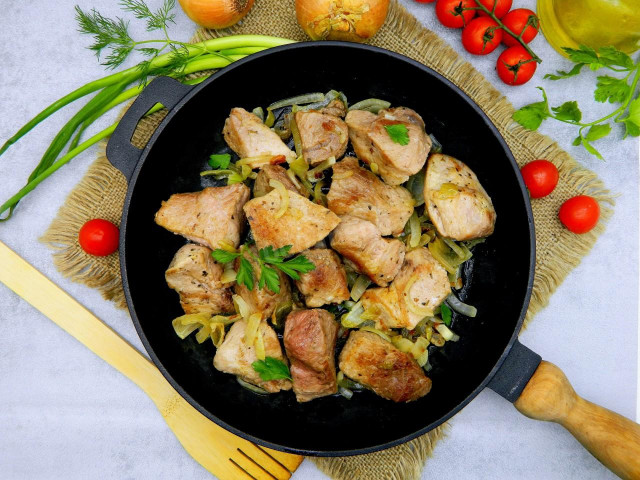Composition / ingredients
Step-by-step cooking
Step 1:
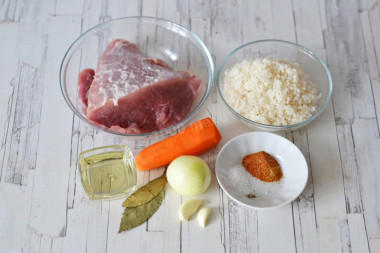
How to cook crumbly pork pilaf in a saucepan on the stove? First, prepare the necessary ingredients. Pork pulp without bones is usually used for pilaf. It can be a ham, a neck, a shoulder blade. I have a ham.
Step 2:
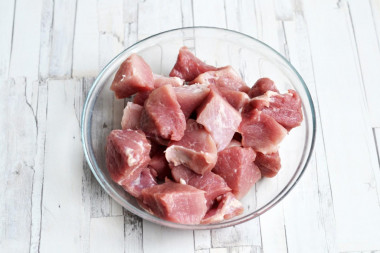
Wash pork, dry and cut into medium pieces.
Step 3:
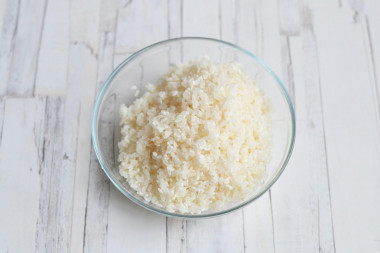
Rinse the rice thoroughly until clear clear water. It is best to use special steamed ground rice for pilaf. It does not boil and retains its shape well.
Step 4:
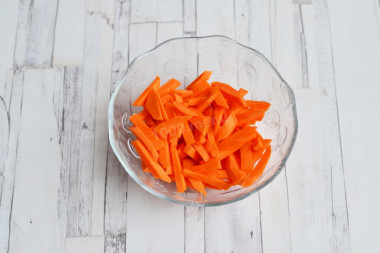
Peel the carrots and cut into small strips.
Step 5:
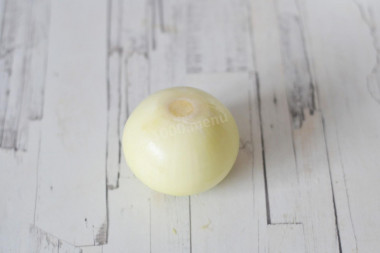
Peel the onion. Usually the onion is added to the pilaf in a cut into small cubes. I usually add the whole onion, and at the very end I throw it away.
Step 6:
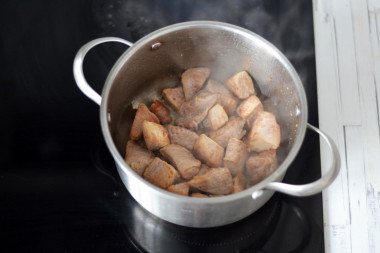
Heat the vegetable oil in a saucepan with a thick bottom. Lay out the pork and fry over high heat until golden brown. If you have a small saucepan, it is better to fry the pork in several rounds so that less moisture is released from it. Roasting on high heat will help seal all the meat juices inside the pieces and the pork will retain juiciness.
Step 7:
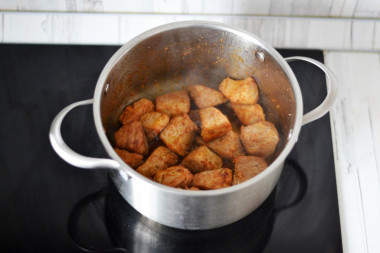
Pour spices into the meat and mix quickly. For pilaf, it is advisable not to use enameled dishes - in it, meat and spices can burn and boil to the bottom. And if you try to clean the bottom, you can damage the enamel. It is better to take stainless steel or non-stick pans.
Step 8:
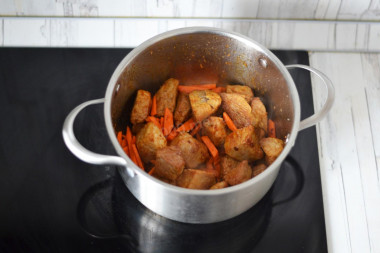
Add carrots to the meat and fry, stirring, over medium heat for 2-3 minutes. If you want to add an onion in sliced form, you need to add it at this stage along with carrots.
Step 9:
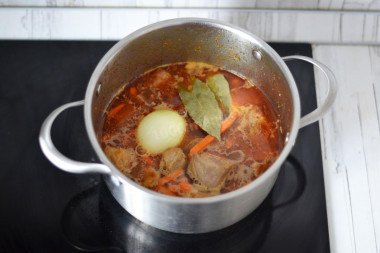
Pour a glass of boiling water into the meat, add a whole onion, if not previously added in crushed form, and a bay leaf.
Step 10:
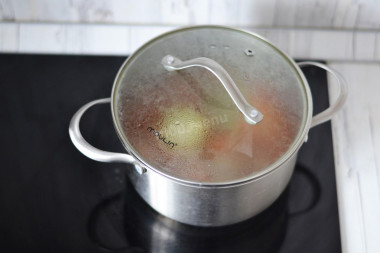
Cover the pan with a lid and simmer over low heat for 20 minutes until the meat is soft and most of the liquid has evaporated.
Step 11:
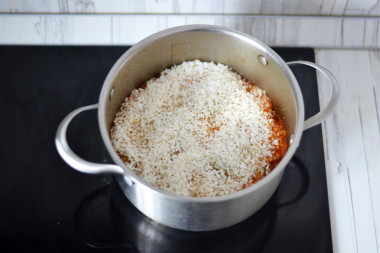
Pour the washed rice on top of the meat and smooth it out. At the same time, the rice should remain on top. It is not necessary to mix it with meat.
Step 12:
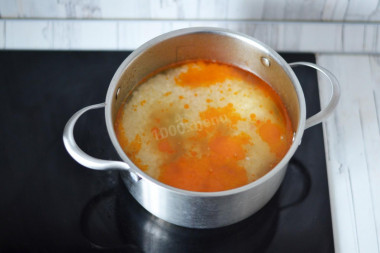
Pour hot water over the meat and rice so that the rice is completely covered with 1 cm of liquid. It took me about a glass and a half of water. It is important that there is not too much water, because in this case it will have to evaporate longer, and the rice may boil and lose its shape.
Step 13:
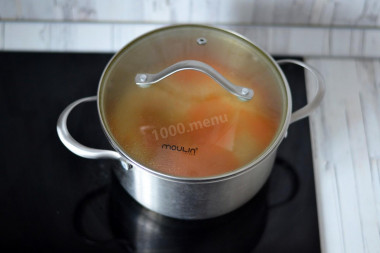
Cover the pan again and simmer over low heat until the liquid evaporates for about 25-30 minutes. At this time, do not stir the rice.
Step 14:
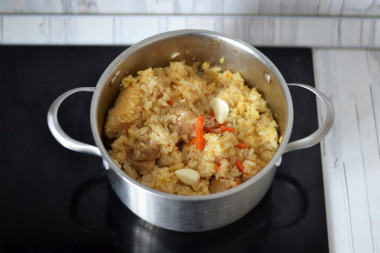
Mix the finished rice with the meat. Put the garlic cloves on top.
Step 15:
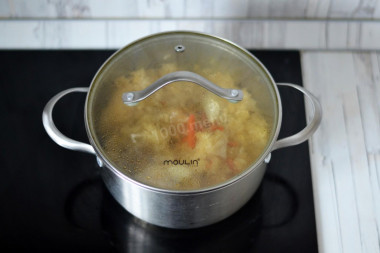
Cover the pan again and let the pilaf brew for another 15 minutes. Bon appetit!
Usually pilaf is cooked in large cauldrons over an open fire. However, in modern urban conditions, such pilaf can be made in an ordinary saucepan on the stove.
Since the degree of salinity, sweetness, bitterness, sharpness, acid, burning is individual for everyone, always add spices, spices and seasonings, focusing on your taste! If you put some of the seasonings for the first time, then keep in mind that there are spices that it is especially important not to shift (for example, chili pepper).
If you use ready-made spice mixes, be sure to read the composition on the package. Often, salt is already present in such mixtures, take this into account, otherwise you risk over-salting the dish.
Caloric content of the products possible in the composition of the dish
- Onion - 41 kcal/100g
- Pork fat - 333 kcal/100g
- Pork meat - 357 kcal/100g
- Pork - low-fat roast - 184 kcal/100g
- Pork chop on a bone - 537 kcal/100g
- Pork - schnitzel - 352 kcal/100g
- Pork Shoulder - 593 kcal/100g
- Boar's leg - 113 kcal/100g
- Pork - 259 kcal/100g
- Raw wild rice - 353 kcal/100g
- Brown raw rice - 360 kcal/100g
- Boiled brown rice - 119 kcal/100g
- White fortified raw rice - 363 kcal/100g
- Fortified boiled white rice - 109 kcal/100g
- White rice, steamed, with long grains raw - 369 kcal/100g
- Steamed white rice, boiled with long grains - 106 kcal/100g
- Instant dry rice - 374 kcal/100g
- Instant rice, ready to eat - 109 kcal/100g
- Fig - 344 kcal/100g
- Carrots - 33 kcal/100g
- Dried carrots - 275 kcal/100g
- Boiled carrots - 25 kcal/100g
- Garlic - 143 kcal/100g
- Bay leaf - 313 kcal/100g
- Ground black pepper - 255 kcal/100g
- Vegetable oil - 873 kcal/100g
- Salt - 0 kcal/100g
- Spices dry - 240 kcal/100g

